Are you thinking about buying an electric bike but have no idea where to start? Our detailed electric bike buying guide will tell you all you need to know about motors, batteries, range, types, and more.
E-bikes have exploded in popularity in recent years, which doesn’t come as a surprise. Once you give them a try, there’s no going back as they allow you to ride faster and further with little effort.
As the e-bike industry develops, manufacturers keep putting out new models, types, and technologies, which is making it harder and harder for people to choose which electric bicycle to get.
We’re here to explain things in a simple and straightforward way and tell you everything you need to know before being able to confidently click the “Buy Now” button and go for a ride.
Scroll down to learn about the basics such as classes, motors, batteries, types, and features.
Contents
What Is An Electric Bike?
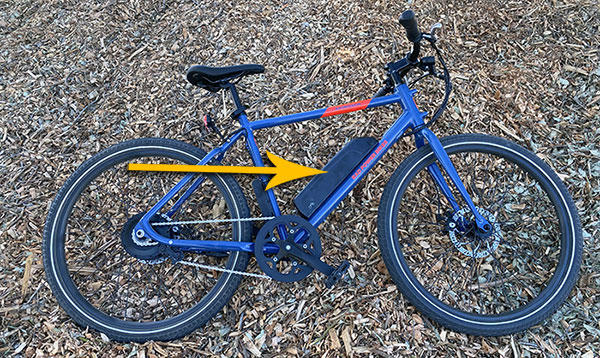
First things first, let’s cover the basics.
A bicycle equipped with an electric motor and battery that assists the rider while they are pedaling is called an electric bicycle.
When it comes to the available types of electric bikes, you get the same variety as with non-electric bikes. There are road and mountain e-bikes, gravel, hybrid, fat, folding, cargo, and so on.
But electric bicycles also differ in terms of electronics. Some assist you only when you’re pedaling and others have a throttle that propels you without turning the pedals. Depending on where you live, the latter might be legally known as a moped (the EU and UK).
There are also different types of motors (mid-drive and hub), batteries can be mounted in different places and vary in capacity, and the choice of components and features is huge as well.
Now that you know the answer to the “what is an e-bike?” question, read more about all of these idiosyncrasies below.
Types of Electric Bikes
The e-bike market is huge today, so electric bicycles come in all shapes and sizes you can imagine. At the beginning of the e-bike era, you could pretty much only choose between hybrid/city and MTB e-bikes.
The choice is much more diverse today, as most brands offer a variety of subcategories. The most common types nowadays are electric road, mountain, hybrid, cargo, and folding e-bikes.

E-Road
Electric road bikes prioritize low weight, integrated components, and streamlined design. Their electric components are usually unobtrusive, so it’s not always obvious that they are electric.
With 250W-350W bicycle motors as a standard, electric road bikes are designed to enhance your effort by supplementing power, rather than taking over completely. They are usually reasonably light, so it feels like riding a regular road bike.
Our Top Electric Road Bikes
E-MTB
In most cases, electric mountain bikes have powerful mid-drive bike motors that are designed to help you pedal up the steepest of hills.
High-end models have top-tier components and suspension, so you can shred like on any other MTB. Electric mountain bikes are also great if you want to keep up with a friend who’s great at climbing or if you want to skip the shuttle and get to the beginning of a DH route without breaking a sweat.
Our Top eMTB Picks
E-Hybrid
This is by far the most common type, suitable for a wide variety of riders. E-Hybrid bicycles usually have rear hub or mid-drive motors and high-capacity batteries that offer lots of range.
Depending on the price range, electric hybrid bikes also have additional features such as lights, fenders, racks, etc. that make them suitable for commuting and year-round riding. In this regard, they are also similar to electric cruiser bikes.
E-Cargo Bikes
Electric cargo bicycles are by far the most practical type. They have powerful motors that help you haul a lot of weight on the front or rear integrated racks and baskets. They are ideal for transporting kids or doing large grocery hauls.
Cargo e-bikes usually have mid-drive motors, but some affordable electric bike models come with rear hub motors instead. Most brands also equip them with a throttle, which makes it easier to start riding when the bike is fully loaded.
Related: Best Cargo Bikes
E-Folding
Finally, electric folding bikes are the favorite type for commuters and city folks. These are small electric bikes that usually have rear hub motors and integrated batteries and boast accessories such as lights, fenders, a kickstand, and a rear rack.
E-folding bikes are ideal for people who ride around big cities, use public transportation, or lack free room in their apartments for storage.
Plus there are electric commuters, e-cruisers, and so on.
Best Folding eBikes
E-Bike Classes Explained
Now it’s time to find out more about the three e-bike classes.
E-bike classes were primarily established for regulatory reasons. They tell you how powerful the bike is, what its top speed is, and what kind of assistance it provides.
This is a key decision point, especially considering that class 2 and class 3 e-bikes are not allowed in certain countries around the world and on some trails in the US.
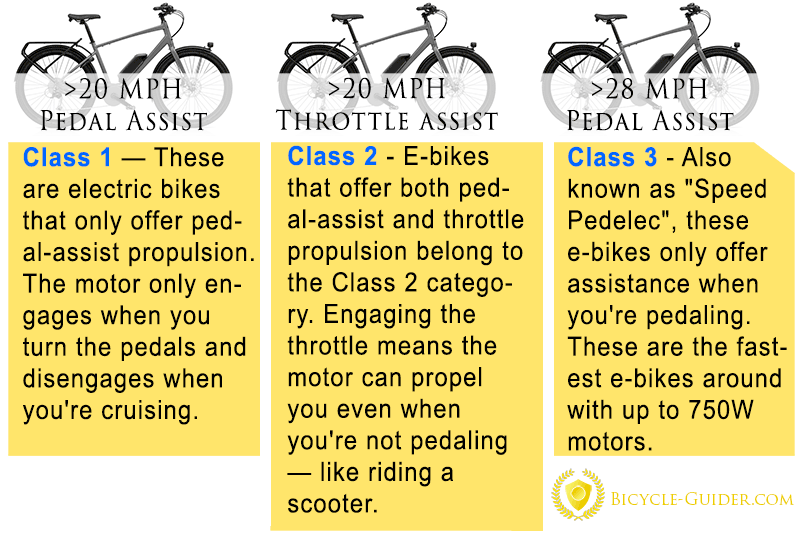
Class 1 electric bikes have a top speed of 20 mph and the motor kicks in only when you are pedaling. That means that they do not have a throttle. This type is legal in all parts of the world, though the maximum speed in the UK and EU is 15 mph.
Class 1 electric bikes are great for riding or commuting on flat to moderately hilly terrain, especially if maximizing the range is one of your priorities. These are also the most affordable electric bikes, which makes them ideal for beginners.
Class 2 electric bikes have a 20 mph maximum assisted speed, but they also have a throttle. They are recognized as e-bikes in the USA, but the EU and UK classify them as electric mopeds.
This type is ideal for cargo and hybrid bikes, especially if you live in an area with steep hills or you plan to carry a lot of weight on the bike.
Class 3 is the most powerful and the fastest type. These e-bikes have a 28 mph maximum speed and do not have a throttle. They are also known as speed pedelecs.
These are usually hybrid or fitness bicycles intended for people who want to get from point A to point B as fast as possible. Class 3 bikes are typically more expensive than other classes due to having more powerful motors and batteries.
Apart from the three classes, there are electric bike conversion kits. With these, you can transform almost every bike into an electric bike. One downside is that they are often too powerful.
Related guide: Do You Need a License for an Electric Bike?
Electric Bike Motor Location and Power
The location of the electric bike motor is pretty important as it affects how the bike rides and feels, as well as how it transfers power.
The two most common types of electric bike motors in terms of location are mid-drive (inside the bottom bracket) and hub-drive (inside the wheel hub) motors.
Bicycle motors also differ in terms of power and torque, measured in Watts (W) and Newton-meters (Nm), respectively.
Learn more: Best Electric Bike Conversion Kits
Motor Location
Mid-drive motors are typically found on more expensive e-bikes as they are considered to be the better choice. They sit low on the bicycle, inside the bottom bracket, increasing the stability by creating a low center of gravity. Mid-drive e-bikes usually offer more power and a more natural ride feel than models with hub-drive motors since the assistance is transferred directly through the pedals, rather than via the chain.
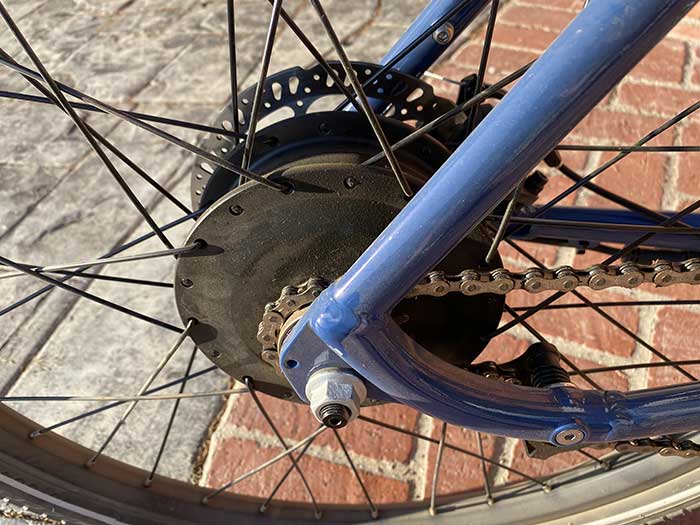
Hub motors can be located in the front or rear hub, though rear hub bike motors are a lot more common. They are typically found on less expensive e-bikes or on some electric road bikes. The rear hub type is considered to be a better choice than the front hub because the rear wheel has better traction and is closer to the drivetrain. Thus, it offers a more natural ride feel compared to front hub motors.
Power and Torque
Power and torque are two important metrics to consider when choosing which e-bike to buy.
These numbers will tell you how much assistance you can expect to get from the bicycle motor and whether or not the bike is suitable for your needs.
When it comes to power, e-bikes usually have motors with anywhere between 250W and 1000W. As you can guess, the more the merrier, especially if you want to go fast, climb hills, or haul cargo. A 250W motor is great for riding on flat terrain at speeds of up to 20 mph, but it will struggle to go up a very steep hill.
Torque is measured in Newton-meters (Nm) and represents the rotational force of the motor.
Therefore, the more torque a motor has, the better it will accelerate and overcome obstacles. High-torque motors with up to 85 Nm are desirable on bikes suitable for climbing and electric mountain bikes; whereas, many road and hybrid bikes have lower-torque motors in order to provide a more natural ride feel.
Sensors
E-bikes use sensors to control the motor output. The most common types of sensors include torque, cadence, and speed sensors.
Less expensive e-bikes usually have cadence sensors that measure how fast you are turning the pedals. The faster you pedal, the more power the motor will deliver. This is not the best way to control the output since you may lack assistance when pedaling slowly, such as when climbing or starting from a complete stop.
Torque sensors, on the other hand, measure how hard you are pedaling.
The harder you push on the pedals, the more power the motor will deliver. This is a great system for climbing hills and for hauling cargo, as the motor will work the hardest when you’re struggling the most.
High-end e-bikes have multiple sensors, which is the best option. This way, you will get the most natural assistance and the most range out of the battery.
E-Bike Batteries
Modern electric bicycles use rechargeable lithium-ion batteries due to their low weight, high performance, and quick recharging.
The battery capacity is measured in Watt-hours (Wh) — the larger the capacity, the more range you can usually expect to get from one charge. The most common numbers you see vary between 400Wh and 672Wh, but there are models that offer less or even more than that.
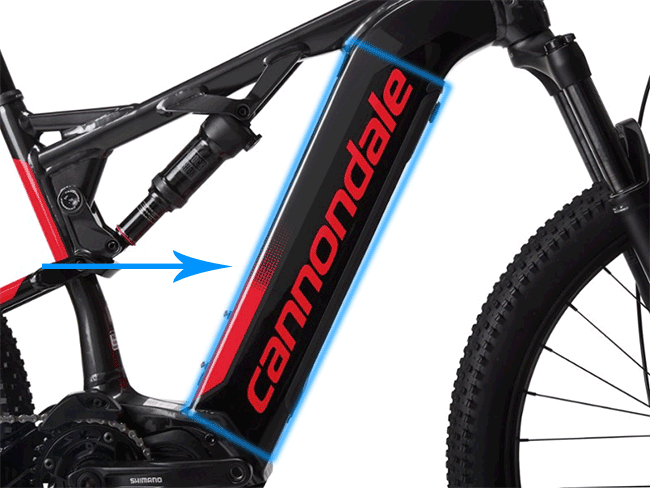
More expensive e-bikes typically come with larger batteries that offer a better range, but they also weigh more. Some long-range electric bikes even have dual batteries that provide more than 1000Wh of capacity.
When it comes to placement, e-bike batteries are usually mounted on the down tube or seat tube. However, they can also be integrated into the down tube on more expensive models, which is the most elegant solution.
E-bike batteries are usually charged fully in a matter of hours from a standard wall plug, so you can easily recharge them wherever you are. Read our complete guide on charging an e-bike to learn about the do’s and don’ts.
Range
The e-bike range refers to the number of miles you can ride with assistance before your battery is empty. Naturally, this is one of the biggest issues for most riders.
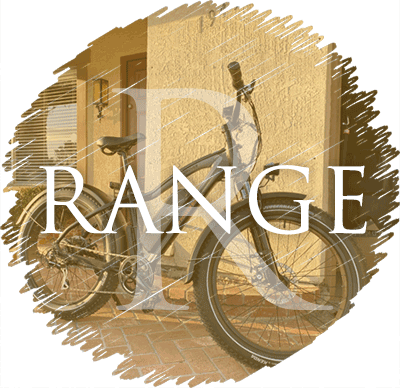
Unfortunately, it is difficult to measure the range correctly as it depends on so many things, such as:
- Terrain
- Tires
- Weight
- Motor
- Pedal-assist level
- Throttle
- Riding style
- External conditions
Bosch’s E-bike Range Calculator can help you get an estimate by including most of these factors.
The two factors that influence the range of an e-bike the most are the battery capacity and how you ride. Having a bigger battery means you’ll get more range out of it, but your riding style is very important as well.
E-bikes usually have 3-5 pedal-assist levels and/or a throttle to control the amount of assistance you receive. Staying in low PAS levels will maximize the range, whereas high PAS levels in combination with the throttle will drain the battery quickly.
Depending on how you ride, you can expect to get between 20–40 miles of assistance out of lower-capacity batteries. High-capacity batteries can last more than 100 miles on one charge, whereas dual-battery setups on long-range electric bikes can deliver up to 200 miles.
Components and Features
The motor, battery, and range trio is not the only thing to consider when choosing which electric bicycle to buy.
An e-bike is still a bicycle so the frame, mechanical components, and accessories are very important as well. Here are some of the most important features that we think you should keep in mind:
- Pedal-assist electric bikes and/or throttle: Depending on the class, e-bikes can have either pedal assistance only or throttle as well. Consider what combination would suit your needs. Some models even have a walk mode, which will assist you while pushing the bike.
- Displays: Most e-bikes have handlebar-mounted LCD displays that show PAS levels, battery level, range, speed, distance, and so on. This is a helpful feature that will help you stay on top of things.
- Lights: If you plan to ride at night or commute in the city, look for an e-bike with battery-powered front and rear lights.
- Smartphone connectivity: Many modern e-bikes have Bluetooth connectivity, which lets you connect your smartphone wirelessly. This way, you can tweak the motor and track all your data using an app.
- Components: Depending on the price tag, e-bikes come with components of different quality, same as non-electric bicycles. Spending more money will get you better groupsets, lighter parts, premium hydraulic disc brakes, better tires, and better suspension.
- Accessories: Some e-bikes have more accessories than others. For example, hybrid and cargo bikes often come with fenders, racks, a kickstand, chainguard, and so on. Consider whether or not you need these features, as they add weight but also increase practicality when it comes to commuting and running errands.
How to Choose an Electric Bike?
Now that you know all of the most important features and characteristics of e-bikes, you should feel a lot more comfortable about choosing your next electric bicycle.
But, to ensure that the e-bike you buy is really the best possible choice you can make, you should think about a few final things when choosing an electric bike.
See The Best Electric Bikes
Consider the Frame and the Fit
No matter how much money you spend and how fancy the components on your bike are, it won’t feel good if the fit is not right. This is true both for e-bikes and non-electric bikes.
In order to get the right fit, you should consider the frame size and material.
Pick the frame size based on your height and inseam length. This is not always straightforward, unfortunately, so if you’re in between two sizes, we recommend checking out a bike size guide or contacting the manufacturer. Though, if possible, it’s always best if you can try the bike in a shop.
The material of the frame can also influence how the bike rides and feels. If you want all the comfort you can get, choose an e-bike with a steel frame. If, on the other hand, you want a lightweight e-bike, you should look for a model with a carbon frame. An aluminum frame will give you the best of both worlds.
Consider Your Needs
Nobody can tell you what the best e-bike for you is. Only you can answer this question by considering your needs and finding something that meets most of them.
Think about what type of bike you need depending on where you will ride (road, MTB, hybrid). Then, depending on the terrain in your area, determine what kind of motor and battery you need. Finally, consider the accessories and write down any that you might need.
Once you have all those things sorted out, you can start looking for the best e-bike online and in local bike shops.
Related: Best Electric Bike Brands
Frequently Asked Questions
What is an ebike?
A bicycle equipped with an electric motor and battery that assists the rider while they are pedaling is called an electric bicycle.
Are e-bikes worth it?
E-bikes are worth it if you think you will benefit from pedal assistance. E-bicycles make cycling much more effortless and fun, which is important for people who want to get from one place to another. If you climb a lot of hills or commute, an e-bike will pay off quickly.
How do I choose the right electric bike?
To choose the right electric bicycle, you need to consider your most important needs and priorities. Some of the things to keep in mind include where you ride, how heavy you are, and how you ride. Then, consider the range, power of the motor, and any accessories you might need.
What to know before buying an ebike?
Before buying your next e-bike, it’s a good idea to learn as much as you can about different features found on electric bicycles. Also, you should understand your needs and priorities, which will help you find the best electric bicycle for you.
What are the disadvantages of electric bikes?
Pedal-assist electric bikes allow you to ride farther, go faster, and pedal longer for the same amount of energy you use. They make it easier to climb and ride against headwinds, as well as help you keep up with a fitter rider. E-bikes are perfect for commuting, as you can ride to work without breaking a sweat.
Will e-bikes come down in price?
Yes, e-bikes will come down in price over time. In fact, this has already happened. You can buy a high-quality e-bike for $1,000–$1,500, with technologies that used to be found on much more expensive models just a few years ago. The same trend will continue in the future.
How much does a good electric bike cost?
Good e-bikes with reliable components usually cost a minimum of $1,000 to $1,500. However, there are some exceptions that cost less than that. The bikes in this price range are heavier than more expensive models, but the motors and batteries are powerful and reliable.
Are electric bikes good for exercise?
Electric bikes are great for exercising as you can choose how much assistance you want the motor to provide. By choosing a low PAS level or turning the motor off completely, you can get a great workout, lose weight, and improve fitness.
How long do electric bikes last?
E-bikes can last just as long as standard bikes, with the exception of a few parts, such as the battery. Many lithium-ion batteries have a lifespan of 500-800 charge cycles or two to three years. However, you can easily replace them after that and keep riding your bike as new.
How fast do electric bicycles go?
Electric bicycles have a maximum assisted speed of anywhere between 15 mph and 28 mph. The top speed depends on the class of the e-bike and the local regulations. Class 1 e-bikes are capped at 15-20 mph, whereas class 3 models have a 28+ mph top speed.
How much are electric bikes?
Electric bikes can cost anywhere between $500 and $15,000. It all depends on your needs and how much you’re willing to pay. An average rider should spend anywhere between $1,500 and $3,000-$4,000 to get a reliable model that works well and lasts a long time.
Final Thoughts
E-bikes are more complicated compared to standard bicycles, so it’s normal to feel overwhelmed when trying to choose the best electric bicycle for your needs.
Hopefully, this electric bike buying guide has answered most of your questions and resolved the majority of your doubts. If you read it closely, you definitely have a much better understanding of various components found on e-bikes, different types of electric bikes, classes, and features.
All this, in combination with a clear definition of your priorities, will help you easily determine what kind of e-bike will meet your desires and make you happy for years.
If you have any other questions, suggestions, or opinions, feel free to comment below!
See The Best Electric Bikes
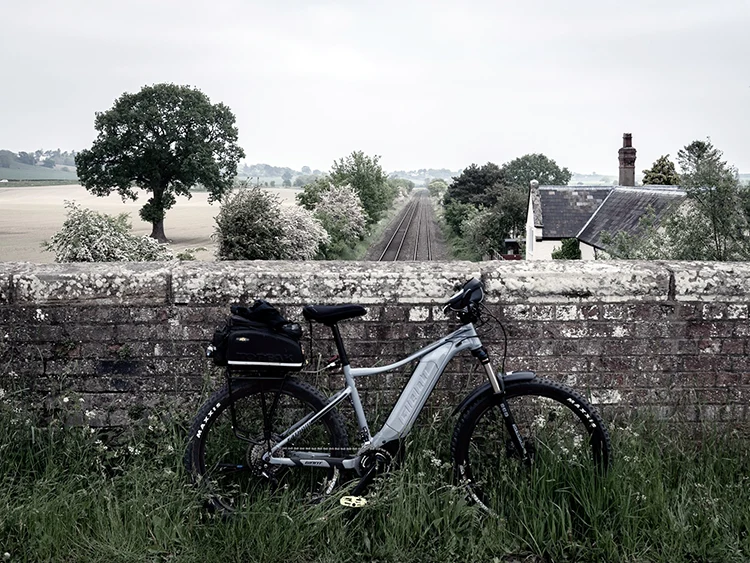

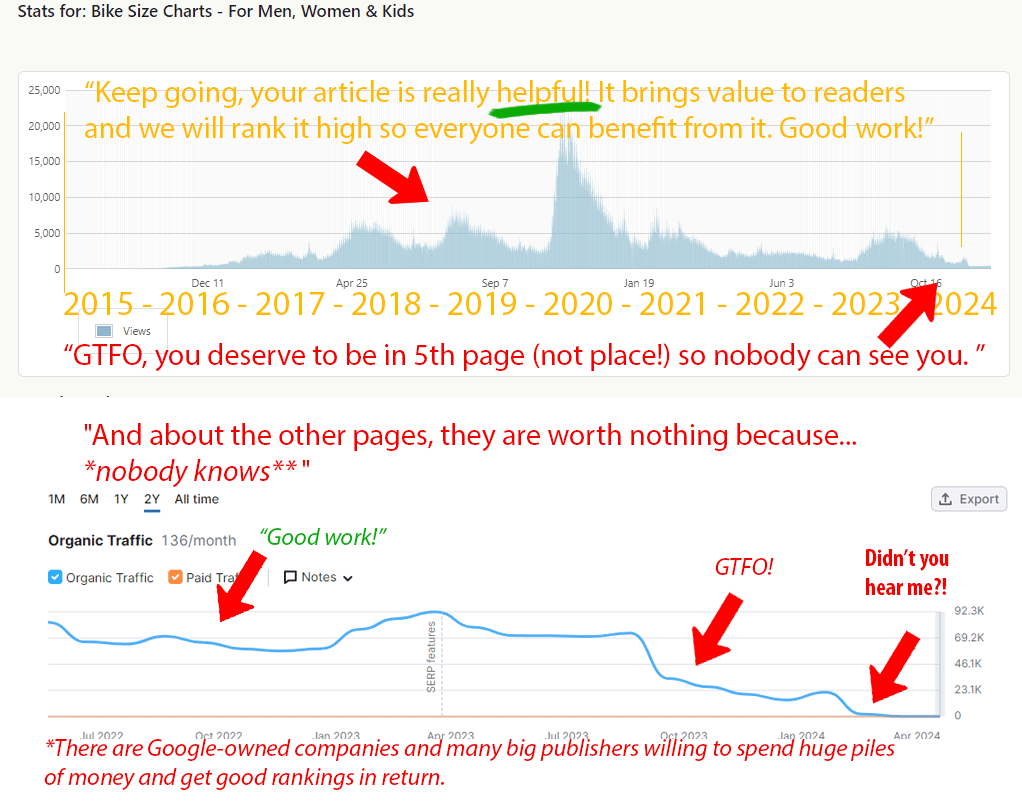
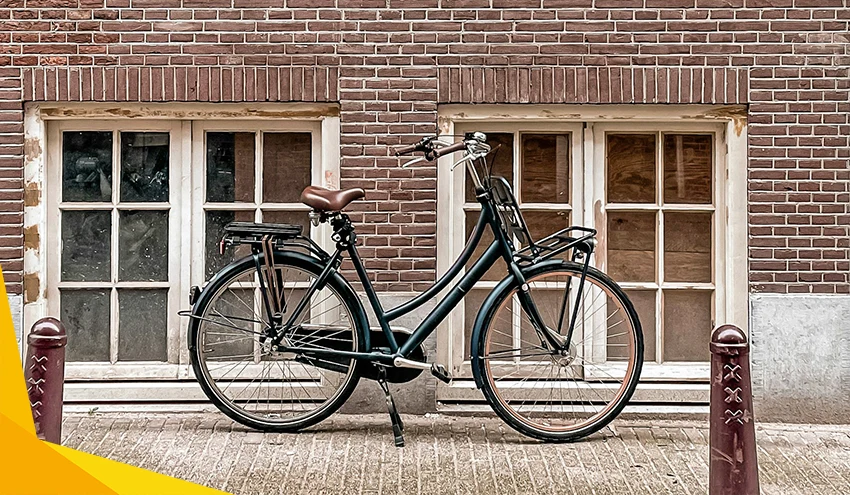
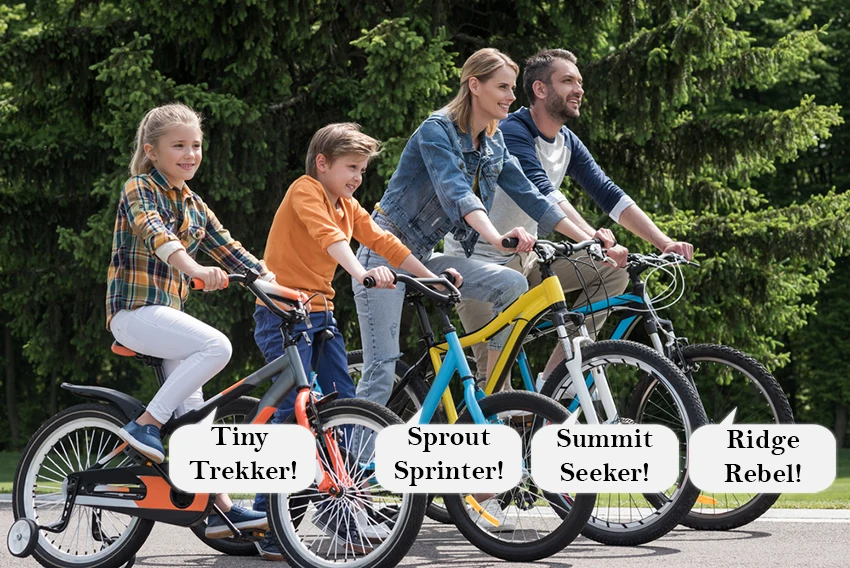
When using the throttle only, can you control the speed? Let’s say go only 8-10 mph?
Hi Allen,
This video should answer your question. Let me know if it doesn’t.
I liked it when you shared that it is great to opt for a folding compact model of e-bike if you don’t have enough storage place. My sister just mentioned the other day that she is planning to travel to work by electric bicycle since it is more environmentally friendly. I will suggest to her getting a folding one so it can be stored easily.
Hi Taylor,
Yes folding bikes (electric or otherwise are convenient). Thanks for the feedback.